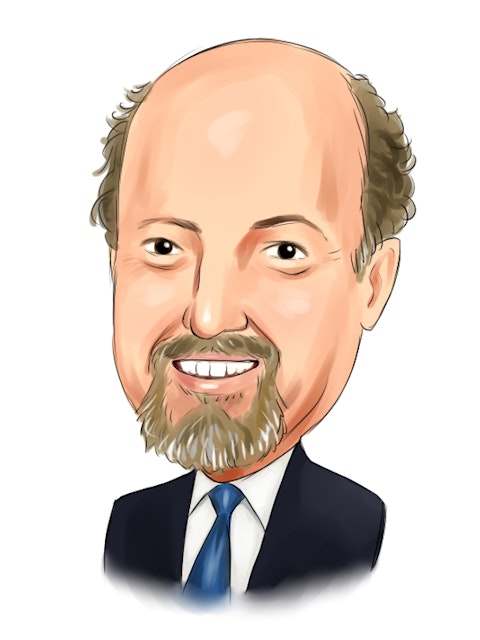On Tuesday, Jim Cramer, the host of Mad Money, analyzed the day’s market activity, shedding light on why some Big Tech stocks gained traction while others struggled. He pointed out that investors are increasingly concerned about the broader economic effects of rising bond yields. Cramer began by questioning how a day could unfold where recent market leaders lose their momentum, prompting money managers to shift back to established favorites like Big Tech.
Cramer acknowledged his growing worry about the bond market, noting that since the Federal Reserve cut rates last month, bond prices have plummeted.
“… Ever since the Fed cut rates last month, right, bond prices have plunged. Bond yields, meaning longer-term interest rates, have soared. Not supposed to happen. But when it does happen, money managers reach for the companies that simply aren’t impacted by the change in the 10-year, the 20-year, or the 30-year US Treasurys.”
Cramer likened Wall Street to Chinatown, suggesting that sometimes, it defies easy understanding. He remarked that people seem to abandon the market’s recent winners in a snap as if discarding hot fries. He then explained that the day’s disappointing earnings reports created confusion, as they didn’t align with the prevailing narrative of strong employment alongside rate cuts.
“See, this morning we got a series of earnings reports that just didn’t add up. They didn’t fit the thesis. They were disappointing. They don’t jive with a rather benign moment when we have the Fed cutting rates, yet employment remains strong. When we get these problematic quarters, several in one day, I might add, money managers default back to the tried and true growth stories that we all know and love. Yes, Titans of Tech. You know what? These managers can’t help themselves. They feel they have to rotate out of what was hot at one point and into something else that’s not that impacted by the big rate-cut cycle.”
READ ALSO 10 Best Jim Cramer Stocks To Buy According to Analysts and Jim Cramer’s Game Plan: 23 Stocks to Watch
He addressed the “alleged earnings disappointment,” clarifying that he chose the term “alleged” because he holds these companies in high regard and does not want to undermine their reputations. Cramer stated that when the 10-year Treasury yields rise, money flows back to these tech giants. He noted that on days like Tuesday, large investors often become apprehensive about cyclical stocks, with concerns about various sectors like aerospace, home building, and even auto parts.
He reassured viewers that this phenomenon is familiar; it has been a recurring theme for over a decade. Cramer suggested that money could just as easily rotate back to previous favorites, but it might take a day or two for that to happen, which shows the volatility of the current market environment.
Concluding, Cramer noted that Big Tech experienced a significant resurgence. He remarked:
“But the bottom line, Big Tech made a big comeback today because of the bond market, not anything to do with the stocks themselves. So, keep in mind that the pause in the rally is temporary, even as you should still own some of the Magnificent Seven for diversification.”

Jim Cramer is Talking About These 12 Stocks
Our Methodology
For this article, we compiled a list of 12 stocks that were discussed by Jim Cramer during his episode of Mad Money on October 22. We listed the stocks in ascending order of their hedge fund sentiment as of the second quarter, which was taken from Insider Monkey’s database of more than 900 hedge funds.
Why are we interested in the stocks that hedge funds pile into? The reason is simple: our research has shown that we can outperform the market by imitating the top stock picks of the best hedge funds. Our quarterly newsletter’s strategy selects 14 small-cap and large-cap stocks every quarter and has returned 275% since May 2014, beating its benchmark by 150 percentage points (see more details here).
Jim Cramer is Talking About These 12 Stocks
12. Genuine Parts Company (NYSE:GPC)
Number of Hedge Fund Holders: 31
Cramer shed light on how Genuine Parts Company’s (NYSE:GPC) earnings call led to the sell-off. Here’s what he said:
“Now we all love the autos. GM had a good number, by the way, but what about the auto parts place? Shouldn’t they be good? Don’t we like Genuine Parts? We should, but not when it whiffs horribly, a gigantic miss. You look at the thing, you think, we have so many old cars on the road, you need to fix ’em, but Genuine Parts, it seems like a can’t-miss story. Then you listen to the conference call of Genuine Parts and CEO Will Stengel tells us, Genuine’s getting slammed by conditions in Europe and their industrial business. Well, most people didn’t even know there is an industrial business in Europe… So once again, get me outta that one pronto and that’s how Genuine Parts stock gets pummeled for a 21% loss.”
Genuine Parts (NYSE:GPC) is a distributor of automotive and industrial replacement parts, catering to a range of markets that include hybrid and electric vehicles, trucks, and various industrial equipment. The company also provides essential repair and assembly services. Recently, the company has faced challenges which can be seen in its third-quarter earnings report released on October 22.
Although the company narrowly surpassed consensus revenue estimates as its revenue rose 2.5% to $5.97 billion, its profits fell short of expectations, reporting $226.6 million. CEO Will Stengel addressed the disappointing results, attributing them primarily to ongoing market difficulties in Europe and a decline in the industrial sector. He acknowledged that the current external environment poses challenges for the remainder of 2024, yet expressed optimism about future improvements stemming from both immediate actions and long-term investments.
During Genuine Parts’ (NYSE:GPC) earnings call, executives highlighted significant “market headwinds” impacting sales in Europe and Australia. These factors contributed to a revised outlook for the fiscal year, with EPS now projected between $6.60 and $6.80, significantly lower than the previous range of $8.55 to $8.75. Additionally, the company adjusted its total sales growth forecast, now expecting an increase of only 2% instead of the previously estimated 3%.
11. PulteGroup, Inc. (NYSE:PHM)
Number of Hedge Fund Holders: 35
Cramer commented on PulteGroup, Inc.’s (NYSE:PHM) offering of incentives to reel in home buyers. Here’s what he had to say:
“Then we go to Pulte Group. Yeah, the big home builder reported what looked like a Jim-dandy quarter, but when you look underneath, you see newfound “rot”, incentives, that was the point. Pulte has to now offer incentives for people to buy homes. The conference call bummed people out because CFO, Bob O’Shaughnessy said, and I’m gonna quote here, ‘We expect incentives to remain elevated for at least the remainder of the year’.
Huh? What incentives? Aren’t the home builders reeling in the money? We don’t need no stinking incentives. Ah, but then again, long rates just keep running higher and that means mortgage rates are moving up. With mortgage rates expensive again, something has to give and it might be the price of a house and that’s how Pulte plunged more than 7% today.”
PulteGroup (NYSE:PHM) is a leading homebuilder in the United States, engaged in acquiring and developing land for residential purposes and constructing a variety of housing options. In its third-quarter earnings report released on October 22, the company reported a net income of $698 million, which shows a rise from $639 million in the same period last year. The growth translated to earnings of $3.35 per share, up from $2.90 per share in the prior year.
Home Sale revenues also saw a significant boost, climbing 12% to reach $4.3 billion. The company reported net new orders totaling 7,031 homes during the quarter, indicating strong demand in the housing market. At the close of the third quarter, its backlog comprised 12,089 homes valued at $7.7 billion.
However, PulteGroup (NYSE:PHM) faced challenges related to increased incentive costs, which impacted its profit margins. Incentives offered to buyers during the quarter reached 7%, marking a sequential increase of 70 basis points from the previous quarter. Management acknowledged that competitive market conditions necessitated higher incentives to maintain sales momentum and efficiently manage assets.





